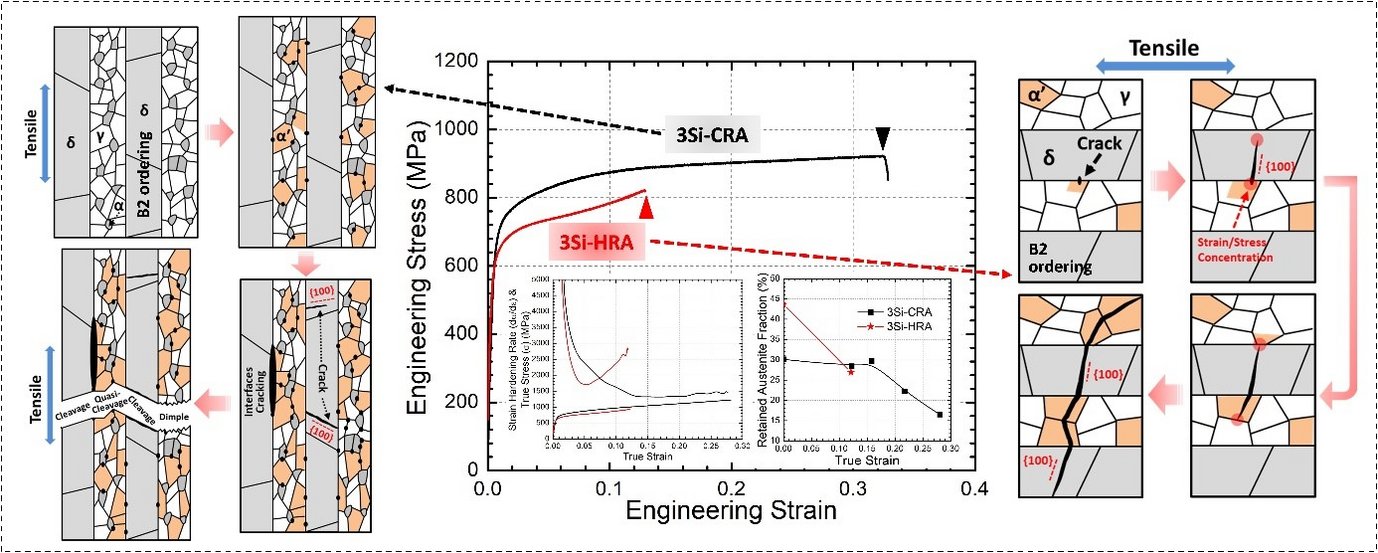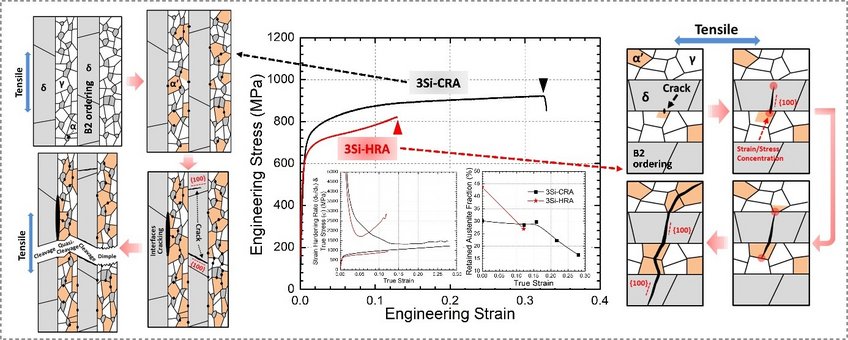Damage and fracture mechanisms in multiphase medium Mn steels
Medium Mn steels possess a composite like microstructure containing multiple phase constituents like metastable austenite, ferrite, δ-ferrite and α'-martensite with a wide range of fractions for each constituent. The high mechanical contrast among them and the deformation-driven evolution of the microstructure lead to complex fracture mechanisms. Here we investigate tensile fracture mechanisms of medium Mn steels with two typical types of microstructures. One group consists of ferrite (α) plus austenite (γ) and the other one of a layered structure with an austenite-ferrite constituent and δ-ferrite. Samples with the first type of microstructure show a dimple-type fracture due to void formation primarily at the ferrite/strain-induced α'-martensite (α'-) interfaces. In contrast, the fracture surface of δ-ferrite containing steels shows a combination of cleavage in δ-ferrite and dimple/quasi-cleavage zones in the γ-α (or γ/α'-α) constituent. The embrittlement of δ-ferrite is due to the formation of B2 ordered phase. Failure of these samples is govern by crack initiation related to δ-ferrite and crack-arresting ability of the γ-α layers. Austenite stability is critical for the alloys’ fracture resistance, in terms of influencing void growth and coalescence for the first type of microstructure and crack initiation and termination for the microstructure containing δ-ferrite. This effect is here utilized to increase ductility and toughness. By tailoring austenite stability towards higher fracture resistance, the total elongation of δ-ferrite containing steels increases from ~13% to ~33%. This approach opens a new pathway towards an austenite-stability-controlled microstructural design for substantially enhanced damage tolerance in steels containing metastable austenite and δ-ferrite.

